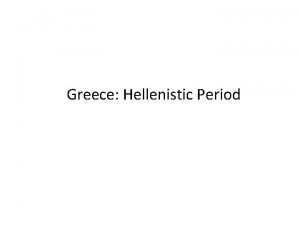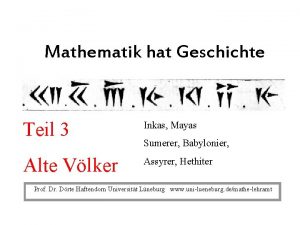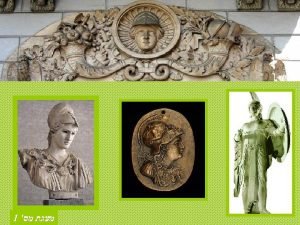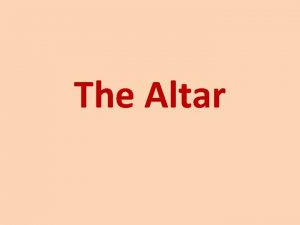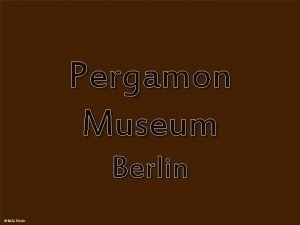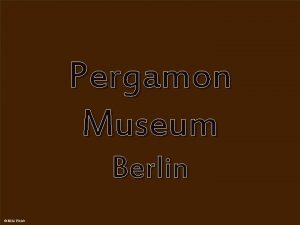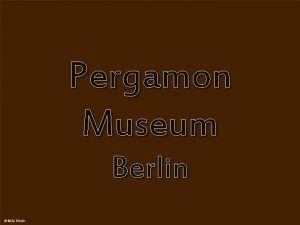Great Altar of Zeus and Athena at Pergamon






- Slides: 6

Great Altar of Zeus and Athena at Pergamon Asia Minor (Turkey) Hellenistic Greek Marble 200 - 150 B. C. E.

8 5 6 2 7 1 3 4

Key Points 1. Context/Form: The art style of this period and this frieze is Hellenistic. This style features drama, emotions, realism, and great detail. 2. Content: This altar displays notable Ionic features in it columns. It has the recognizable top scroll of the Ionic era. 3. Form: The frieze is a high relief. The figures are almost completely in the round. There is much depth and dimension to the art. It is incredibly busy and agitated. 4. Content: The frieze depicts the war between the Olympians and the giants for control of the world and universe. Zeus and Athena are the stars of this frieze, each displaying great power and control in the battle.

Key Points 5. Context: This altar was commissioned by King Eumenes II to commemorate Pergamon’s victory over the Galatians. 6. Function: The altar served a purpose similar to the Parthenon. It commemorated chosen divine figures, in this case Zeus and Athena. It stood on the Acropolis of Pergamon, just like how the Parthenon was on its own acropolis. 7. Content: There are four main components of this altar. It has a massive staircase leading up to the central area. There are two wings that come away from the central area, making the altar a horseshoe shape. The cella is at the center, and the stairs lead up to here. Function dictates the form here, so it has much in common with the Parthenon.

Key Points 8. Context: The altar was destroyed in eighth century C. E. by Byzantine conquerors. The materials were used to build a wall. This is much like the fate of other Greek art, specifically bronze statues. These were melted down for resources by their later possessors. 9. Content: This altar is constructed of marble. The frieze is 400 feet long and includes over 100 delicately sculpted marble figures. This frieze is similar in complexity and importance to the Panathenaic Procession frieze on the Parthenon. Different subjects, but similar works of art in purpose. 10. Context: The Kingdom of Pergamon was one that flourished around modern day Turkey. It arose from the ashes of the Macedonian Empire after Alexander the Great’s death. It became a major center for Hellenistic culture.

Sources https: //www. khanacademy. org/humanities/ancient-art-civilizations/greek-art/hellenistic/v/the-pergamon-altar-c-200 -150 -b-c-e Image and info from Khan Academy https: //www. slideshare. net/secret/hf. Wdbh. WL 9 M 3 wx 0 Additional info from class powerpoint
